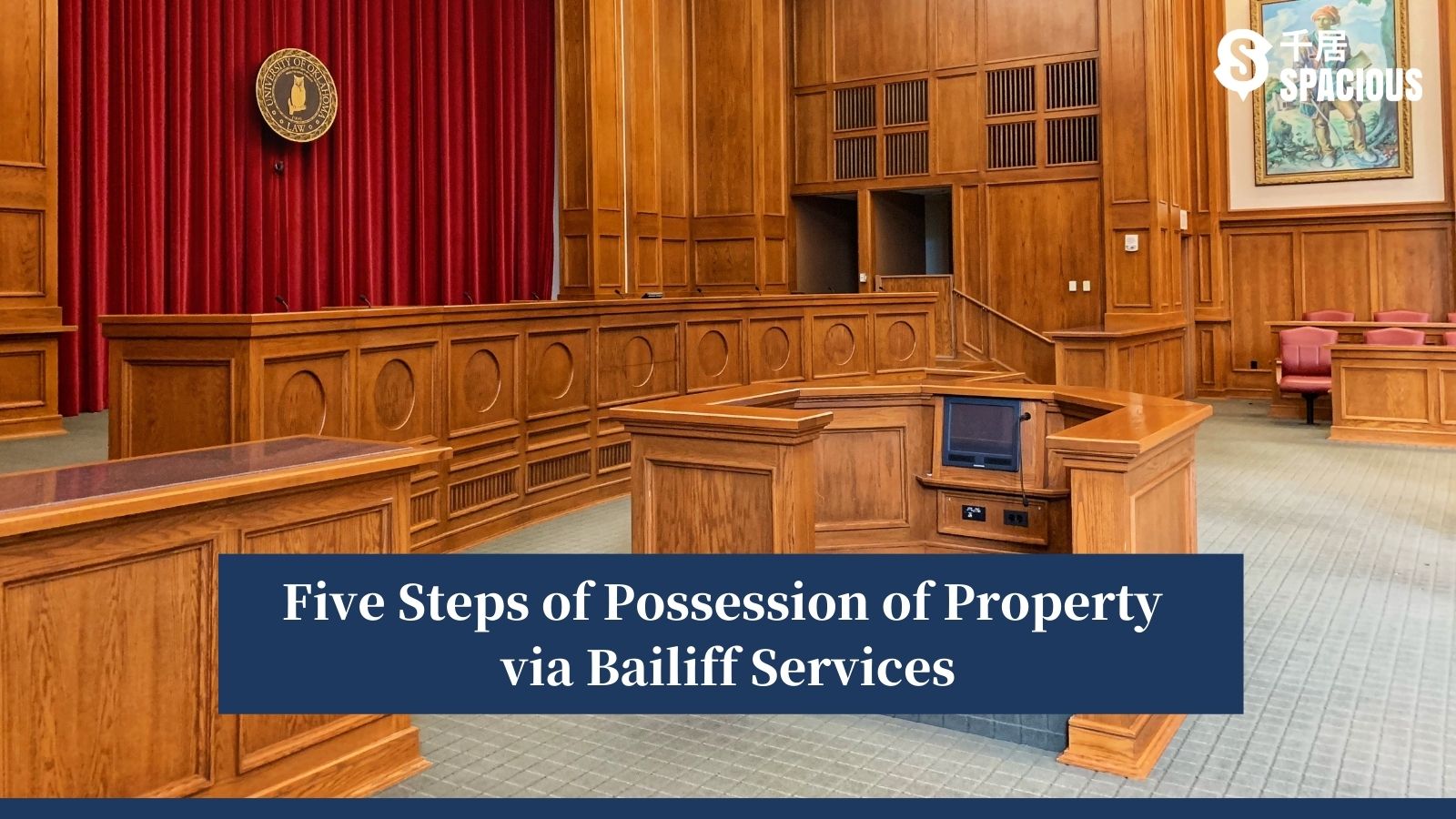
Being a landlord is never easy. Chances are that you may run into tenancy disputes such as overdue rents or unauthorised subletting. If problems persist or worsen, a bailiff may help with recovering the possession of your property.
A bailiff is an officer responsible for executing court orders. Landlords need to file a case to the court and obtain a court order for recovery of possession before engaging the bailiff services. In this article, Spacious will explain the five major steps of recovery of possession executed by a bailiff.
Jump to: 1. File a Claim to Recover Unpaid Rent | 2. Apply for the Recovery of Possession and Rent | 3. Notify the Tenant | 4. Apply for a Judgment and an Execution Order | 5. Recover the Possession of Property | FAQ
1. File a Claim to Recover Unpaid Rent
If the tenant is more than 15 days behind on rent, the landlord can file a claim to recover unpaid rent or repossess the property.
Before doing so, the owner should ensure that the tenancy agreement has been stamped and that the “Notice of New Letting or Renewal Agreement” (form CR109) submitted to the Rating and Valuation Department so that the authority has a record of your rented property.
If the tenancy agreement is not stamped, it needs to be done as soon as possible. A penalty of 10 times the fee may apply. Likewise, the CR109 form also needs to be submitted if not done before. A fee of $310 must be paid in advance.
Once the Rating and Valuation Department receives the Notice, the owner can take legal action based on the tenancy agreement.
Depending on the amount owed, the owner can file a claim in the following tribunals or courts:
| Small Claims Tribunal | Claims Amount: HK$75,000 or below |
| District Court | Claims Amount: between HK$75,000 and $3M |
| Court of First Instance of the High Court | Claims Amount: Infinity |
Find or sell properties on Spacious
2. Apply for the Recovery of Possession and Rent
If the landlord decides to repossess the property and recover the rent, they can fill out the application forms and apply for an execution order at the tribunal or court.
Required Documents
For repossession applications with the Tribunal, the landlord must submit:
- ID card
- Completed “Application Notice” (Form 22)
- Completed “Notice to Persons In Actual Possession/Occupation”
- Stamped copies of the lease agreement
- Rent receipt or other documents proving ownership and lease agreement
Required Fees
At this point, the landlord needs to pay the execution fee, including:
- $235 for the “Notice of Application” (limited to the Lands Tribunal)
- About $188 for filing and copy fees
- Other miscellaneous document fees
3. Notify the Tenant
Within 7 days after submitting the Notice of Application, the landlord must send a copy to the tenant. The landlord can deliver the copy in person, by mail, or request the tribunal to deliver it on their behalf.
At the same time, the landlord must post a copy of the “Notice to Persons In Actual Possession/Occupation” for 3 consecutive days on the door of the unit.
The notice generally specifies the grace period for the tenant to pay the rent. If the tenant pays the rent within the designated period, the landlord will not take back the unit.
After posting for 3 days, the landlord must submit the “Service of Notice of Application” (Form 30) to the tribunal within 3 days. The tenant can respond within 7 days, and if there is no objection raised, the landlord can apply for a judgment without a trial.
Find or sell properties on Spacious
4. Apply for a Judgment and an Execution Order
If the tenant does not object, the landlord can apply to the tribunal for a judgment, and then apply for an execution order to take back the property. After the execution order is approved, which usually takes about one week, the landlord can apply to the bailiff for enforcement.
If the notice was not posted on the door earlier, the landlord must now post a “Notice to Recover Possession” on the door for three consecutive days. After four working days, the landlord must submit an “Application for Leave to Issue a Writ of Possession” to the tribunal and then apply to the bailiff to execute the order.
Required Documents
“Application for Leave to Issue a Writ of Possession”
Required Fees
- HK$182 for “Application for Leave to Issue a Writ of Possession”
- Filing fee for the Writ of Possession
- About HK$1,500 for bailiff deposit (more expensive in the New Territories)
- Security guard deposit, up to 8 days of service, can be arranged by the bailiff
Regardless of whether the property is successfully recovered or not, the costs of the bailiff and security guard will be deducted from the above deposit, and the remaining deposit can be returned to the landlord after the property is recovered.
5. Recover the Possession of Property
After applying for an order of repossession, the bailiff will generally notify the tenant to move out within 1 to 2 weeks. If the tenant has not moved out after 7 days, the bailiff will issue a “Final Notice to Vacate” to inform the tenant of the deadline of leaving the property.
On the day of recovery of possession, the bailiff will accompany the owner to the property. If the tenant does not open the door, a locksmith will break in. If the tenant resists, the bailiff will report to the police on their behalf.
Required Fees
The bailiff will take photos for the property and the assets inside. The fee for each case is $40 per photo, and the whole process can take 2-4 months.
If you are searching for a property across different neighbourhoods, go to Spacious to discover a wealth of properties listed for sale.
Find or sell properties on Spacious
FAQ
What should the landlord do if the tenant suddenly pays the rent before the day of repossession?
If the tenant pays all the rent owed and the landlord’s legal fees within the court-specified deadline for repossession, the tenant can continue to rent. However, this is a grace period provided to first-time offenders.
What should the landlord do if the tenant’s belongings are left behind after the property is repossessed?
The landlord can apply to the court for an order to dispose of the belongings in the house, but this incurs costs. Alternatively, the landlord can apply for the issue of a Writ of Fieri Facias to instruct the bailiff to sell the property to offset the rent.









